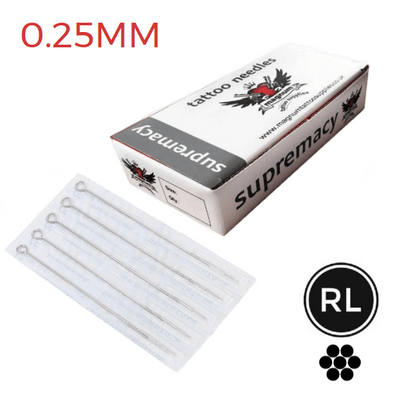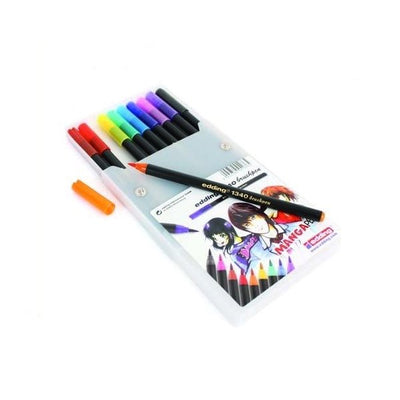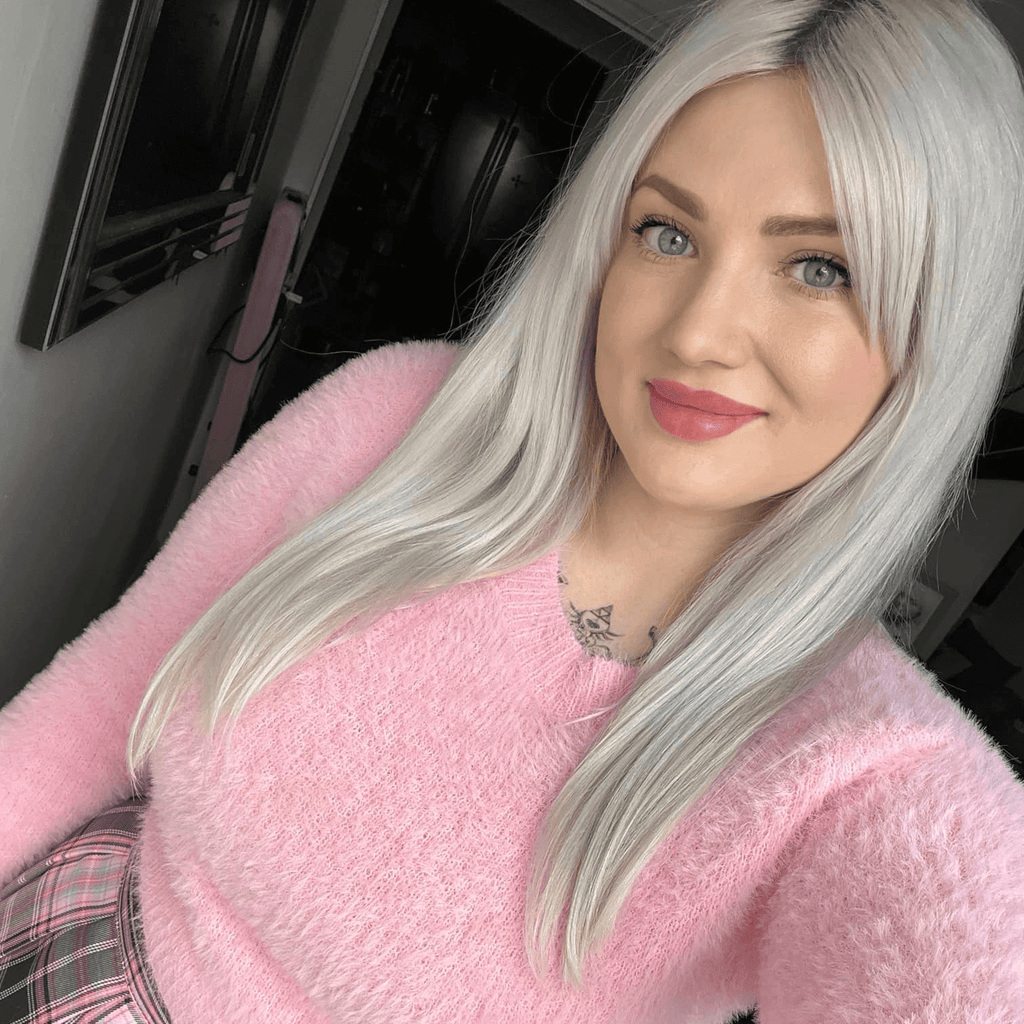Choosing the right spot for your tattoo is just as important as picking the design. Different body parts can affect how much it hurts to get the tattoo and how well it will look over time. Knowing where tattoos hurt the most can help you decide the best place for yours.
So we will give you simple tips on what to think about when choosing the perfect tattoo placement, including pain levels, skin quality, and personal meaning. Understanding these important factors will help you pick the perfect spot for your tattoo.
And don't forget, proper tattoo aftercare is essential to keep your new ink looking great. For all your tattoo aftercare products, visit our website to find everything you need.
Factors to consider when deciding tattoo placement
Visibility
Visibility is a significant factor when deciding on the placement of a tattoo. You need to determine how prominently you want your tattoo to be displayed. For some, tattoos are a form of self-expression meant to be shown off, while others may prefer a more private display.
Consider your lifestyle and professional environment as well; some workplaces and social settings may have policies or cultural norms that frown upon visible tattoos.
Reflect on how a visible tattoo might impact your interactions in various aspects of life, including with family and friends who might have differing opinions on body art.
Pain tolerance
Understanding your pain tolerance is crucial when choosing tattoo placement. Different body parts have varying sensitivity levels due to the concentration of nerve endings. Areas like the ribs, feet, hands, and spine are known to be more painful, while locations like the upper arm, thigh, and calf generally cause less discomfort.
Assess your own pain threshold and discuss it with your tattoo artist to ensure you pick a spot that you can endure comfortably. Additionally, being mentally prepared and knowing some pain management strategies can make the tattooing process more bearable.
Tattoo design and size
The design and size of your tattoo significantly influence its placement. Larger, more intricate designs require more space and are better suited for broad, flat areas like the back, chest, or thigh. Smaller designs can fit well on areas like the wrist, ankle, or behind the ear.
The design flow should complement the natural lines and contours of the body part chosen. Matching the design with the appropriate body location is essential to maintain the tattoo's aesthetic integrity and ensure it ages well over time.
Skin quality
The quality of your skin varies across different body parts, affecting how well a tattoo holds up over time. Areas with thicker, more resilient skin, such as the upper arm or thigh, tend to maintain tattoos better than areas with thin or loose skin, like the inner arm or abdomen.
Stretch marks, scars, and frequent movement can also affect the longevity and appearance of a tattoo. It's important to choose a location where the skin is in good condition to ensure the tattoo remains vibrant and intact as you age.
Body shape and contours
Your body shape and the natural contours of different body parts play a significant role in tattoo placement. Certain areas of the body provide a more suitable canvas for specific designs.
For example, a design with intricate details might look better on a flat, broad surface like the back, while a design meant to flow with the body's curves could be ideal for the shoulder or hip.
Consider how the tattoo will appear in relation to your body movements and how it might change over time with weight fluctuations or muscle development.
Personal meaning and symbolism
The significance of a tattoo often extends beyond its visual appeal. Different body parts can hold various personal and cultural meanings.
For instance, a heart over the chest might symbolise love and passion, while a tattoo on the wrist could be a constant reminder of a personal mantra or motivation. Reflect on the meanings associated with different body parts and how they align with the message or sentiment you want your tattoo to convey. This consideration adds a deeper layer of personal significance to your choice of placement.
Significance of various body locations
Upper arm, forearm, and wrist:

Arms are a highly popular location for tattoos due to their versatility. They provide ample space for both small and large designs and can be easily shown off or covered up as needed.
- Upper arm: Offers a large canvas suitable for detailed designs. It's a less painful area to tattoo and can be easily concealed. Often associated with strength and protection.
- Forearm: Ideal for medium-sized tattoos, the forearm is more visible and a good choice for designs you want to display frequently. It can symbolise strength, power, and personal beliefs.
- Wrist: Typically chosen for smaller, more personal tattoos. Wrist tattoos are visible and can carry significant meaning to the wearer. Commonly represents time, loyalty, or important reminders.
Upper back, lower back, and spine:

The back provides one of the largest areas for tattooing, making it ideal for complex and detailed artwork.
- Upper back: Popular for large designs like portraits and intricate patterns. It's a broad, flat surface that allows for extensive detail. This also symbolises support and protection.
- Lower back: Sometimes associated with specific trends, but still a good spot for personal and significant tattoos. This can be a symbol of strength and sensuality.
- Spine: Suitable for designs that follow the natural line of the spine, often seen as elegant and symbolic. Often represents the central support of the body, symbolising strength and resilience.
Chest and ribcage

Ribcage and chest tattoos are often chosen for their intimate nature and close proximity to the heart, making them deeply personal.
Pain considerations and healing process:
- Chest: Moderate to high pain levels, especially near the sternum.
- Ribcage: One of the more painful areas because of proximity to bones and the thin skin.
The symbolism of chest and ribcage tattoos:
- Chest: Symbolises love, loyalty, and passion, given its closeness to the heart.
- Ribcage: Can represent inner strength and personal beliefs, often chosen for meaningful quotes or designs that flow with the body's natural lines.
Thighs, calves, and ankles:
- Thighs: Provide a large area for more extensive designs and are relatively less painful. Great for both detailed and large pieces, as well as smaller personal tattoos. It can symbolise strength and stability.
- Calves: Offer a good balance of visibility and concealment, suitable for medium to large designs. They are visible yet easy to cover up, making them versatile. Often associated with movement and progress.
- Ankles: Typically chosen for smaller tattoos, they are visible but can be easily hidden. Represent journeys and milestones.
Hands and feet

Tattoos on hands and feet are highly visible and can make a bold statement, but they face unique challenges, such as quicker fading and higher visibility of wear and tear.
- Hands: High pain levels due to thin skin and numerous nerve endings. Often chosen for personal and significant symbols, reflecting beliefs, or important reminders.
- Feet: Similarly painful, with added challenges due to frequent movement and footwear. Symbolise journeys, travel, and personal milestones.
Neck and face

Neck and face tattoos are among the most visible and bold, often reflecting a strong commitment to body art and personal identity. These areas can carry significant social and professional implications. Neck and face tattoos are often more accepted in certain cultures and communities but can be controversial in others.
- Neck: Symbolises courage and personal freedom. It is often a choice for those who view tattoos as a core part of their identity.
- Face: Represents a bold personal statement and individuality, chosen by those who embrace societal perceptions and are comfortable with the attention it brings.
Practical tips for choosing tattoo placements
Consult with professional tattoo artists.
Talk to a professional tattoo artist. They can guide you on the best spots for your design, considering size, detail, and how it will age.
Consider long-term implications
Think about how your tattoo will look as you age or if your body changes. Choose a spot that will still look good over time and in different life situations.
Balance personal preference with practical considerations.
Decide how visible you want your tattoo to be. Choose a location that can be easily shown off or covered up as needed.
Test out potential placements.
Try using temporary tattoos or drawing the design on your skin. This helps you see how it will look and feel in different areas.
Evaluate pain tolerance and healing.
Different body parts have different pain levels. Research and honestly assess your pain tolerance. Also, consider how long the area will take to heal.
Think about skin quality and texture.
Areas with smooth, firm skin hold tattoos better. Avoid places with thin or loose skin to prevent fading and distortion.
Reflect on personal meaning and symbolism.
Consider what each body part means to you. Choose a location that adds personal or cultural significance to your tattoo.
Plan for future tattoos
If you plan to get more tattoos, think about how they will look together. Ensure there's enough space and they complement each other.
Final thoughts
Choosing the right spot for your tattoo is important for how it looks and feels. Think about pain, visibility, skin quality, and what the placement means to you. A well-placed tattoo will bring you joy for years.
If you're looking to get started with your tattoo journey or need supplies for your next piece, we've got you covered. From tattoo machines and needles to inks and other tattoo products, we have it all. Just visit our website to find everything you need for your tattooing needs.



























































 Studio supplies
Studio supplies












 Power & batteries
Power & batteries








 Aftercare
Aftercare





















 Apprentice
Apprentice


 Piercing & jewellery
Piercing & jewellery







 PMU supplies
PMU supplies




 New arrivals
New arrivals
 Gift vouchers
Gift vouchers
 Shop all
Shop all















































